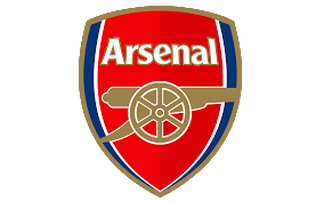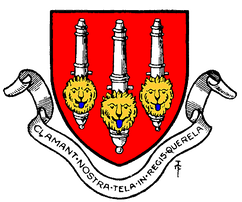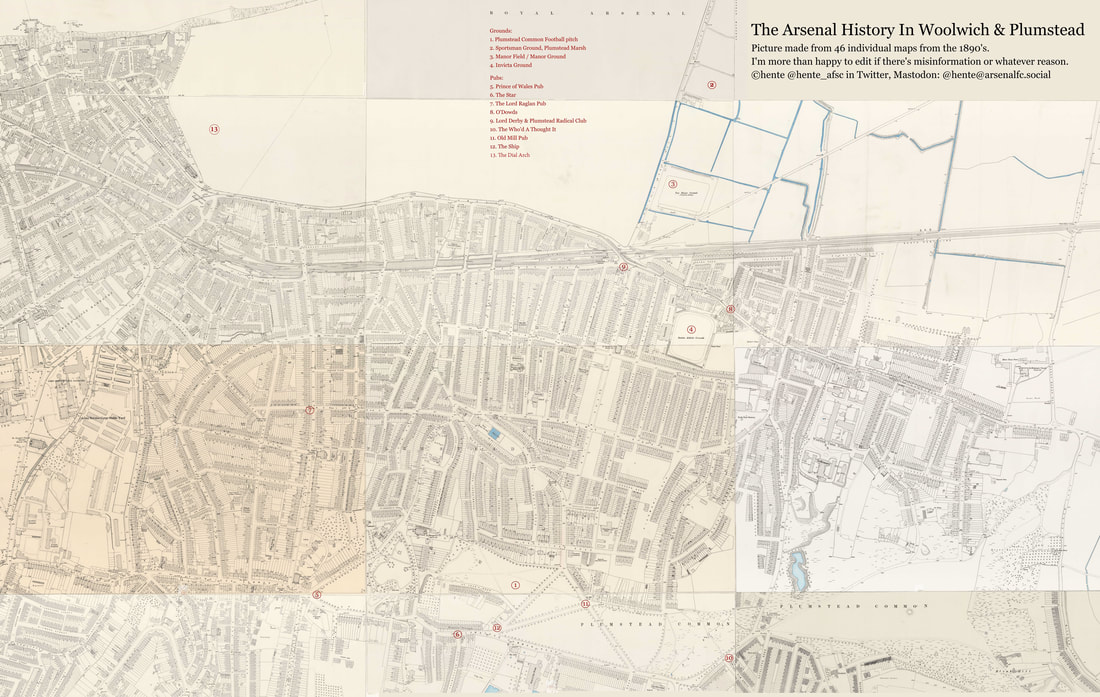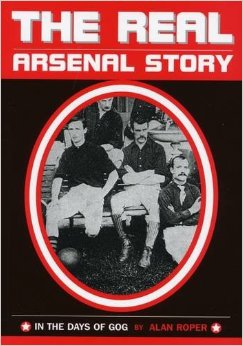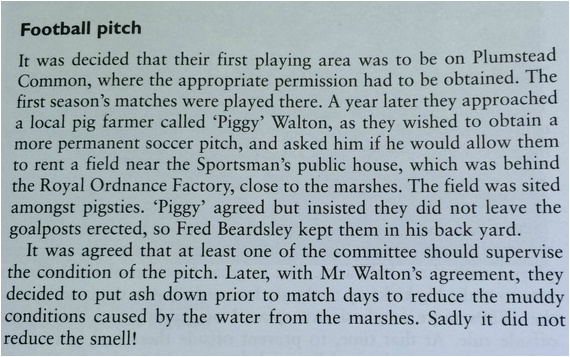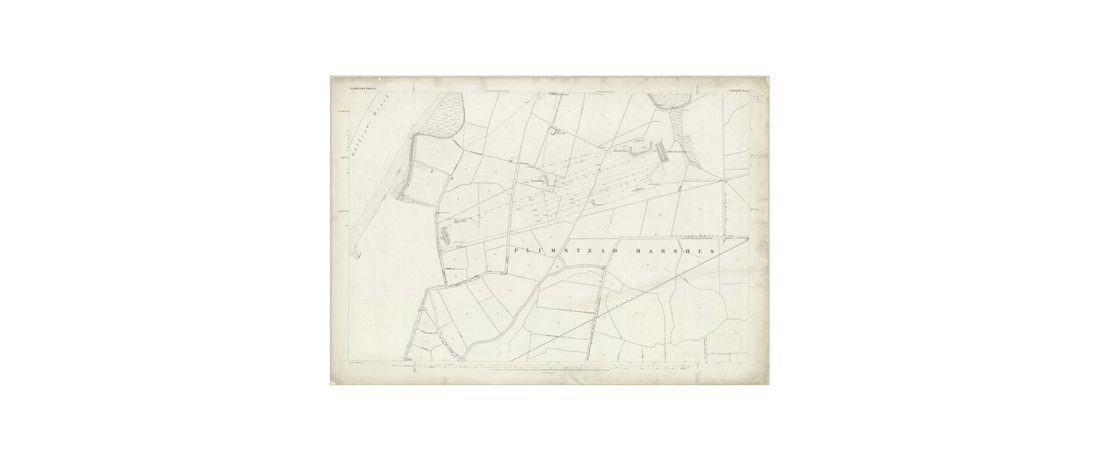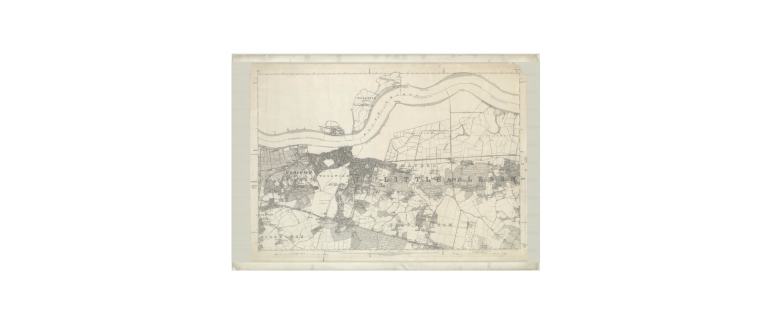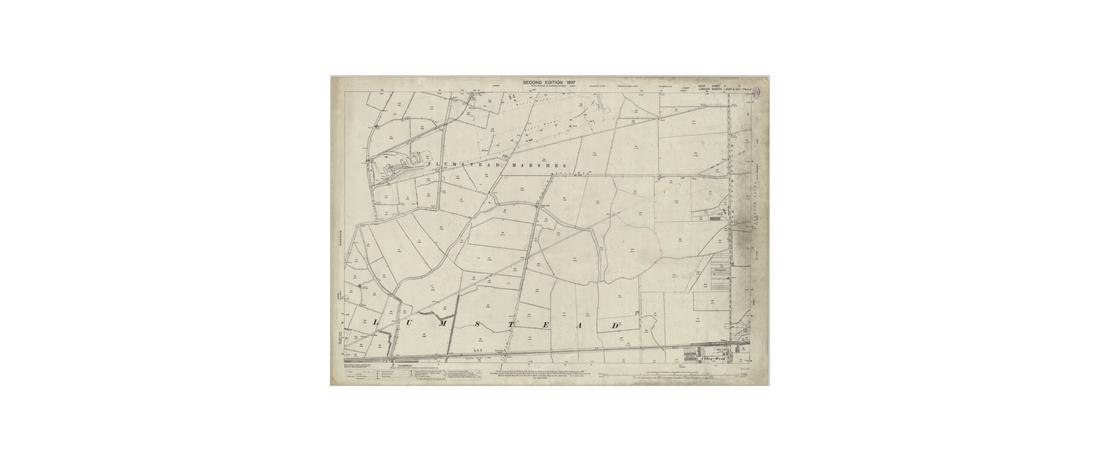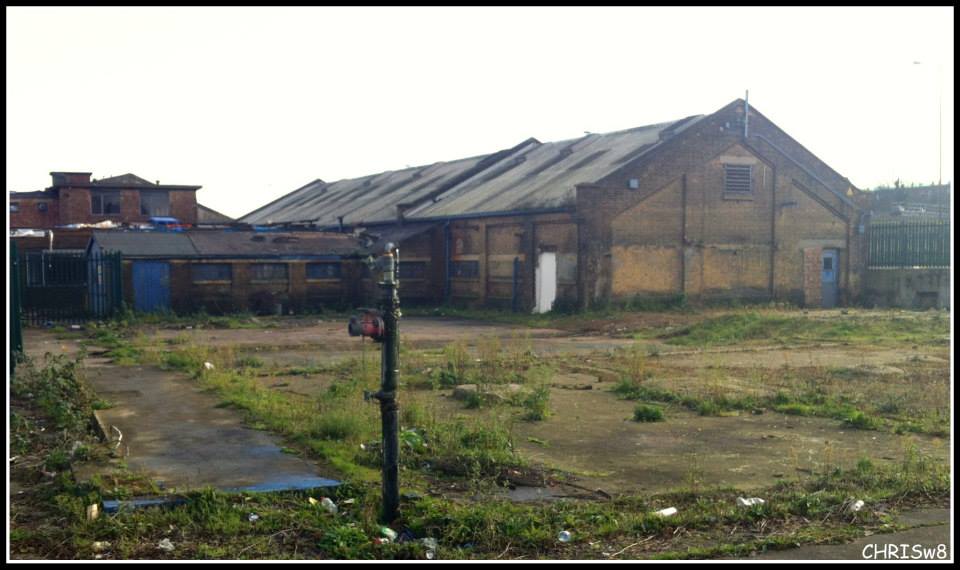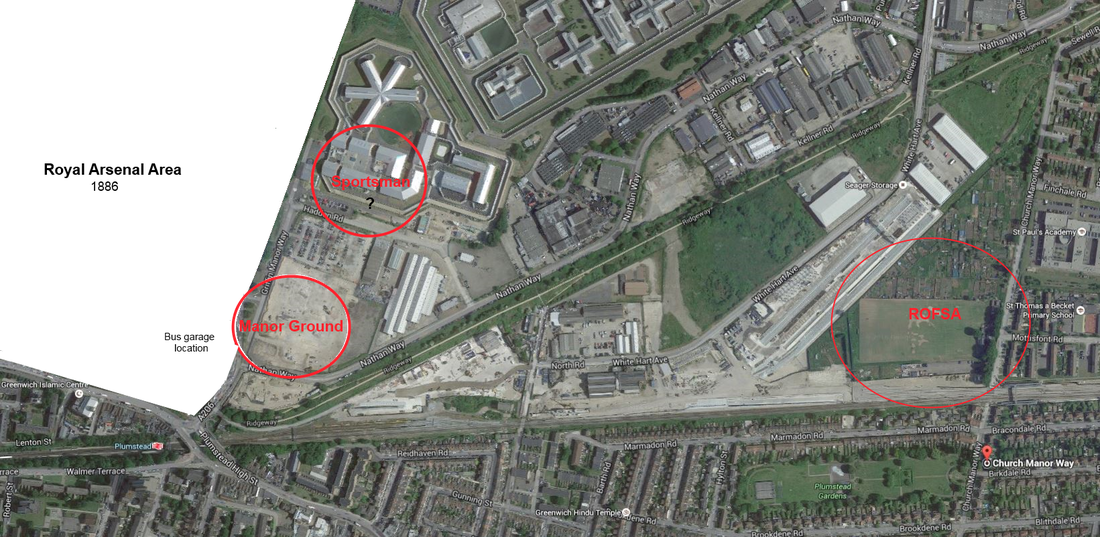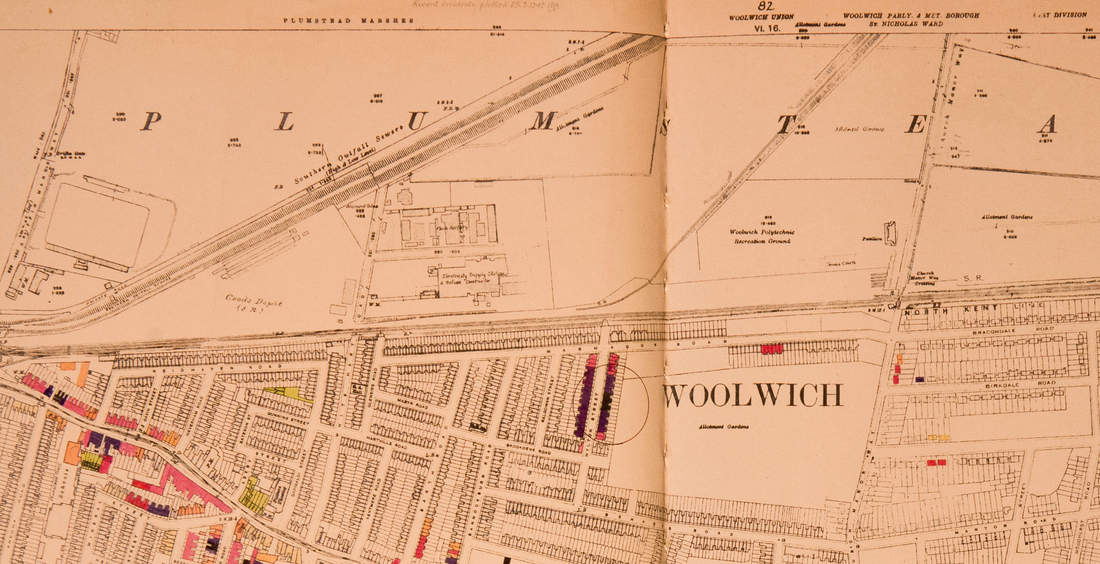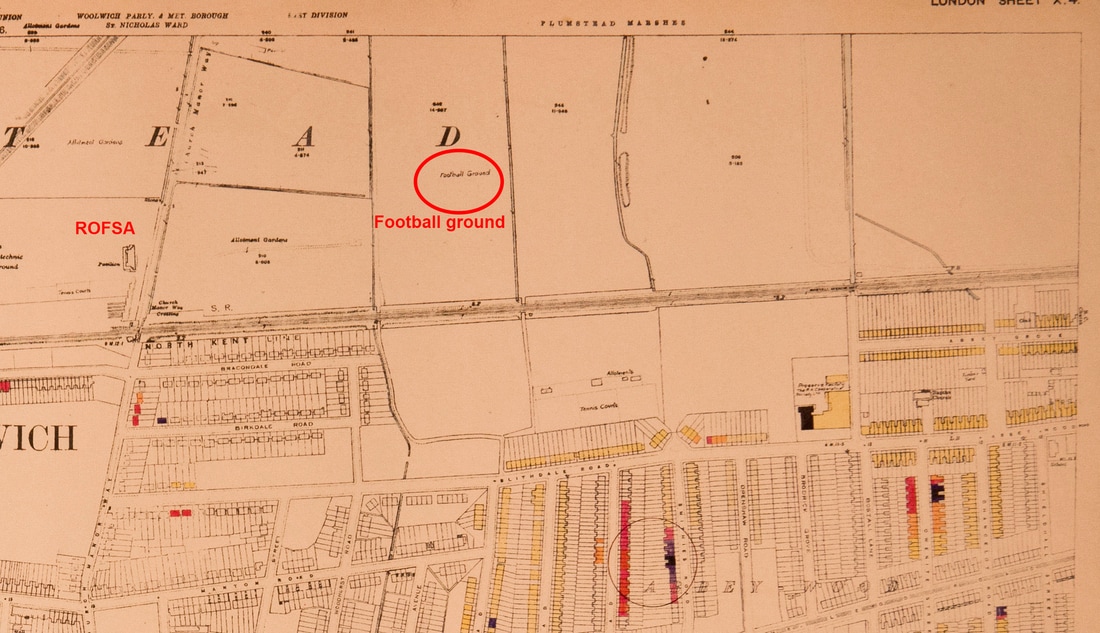Arsenal Football Club: A Legacy Built on the Roots of Royal Arsenal Woolwich
Arsenal football club roots, the Gunners.
Embark on a thrilling journey through time and explore the roots of the legendary Arsenal Football Club in South East London, UK, which was part of Kent at the time. We have compiled a historical sightseeing list and map that will take you to the former playing ground locations and related pubs in the areas of Woolwich, Plumstead, and Thamesmead, where you can relive the glory days of the club and savour a pint where it all started, and immerse yourself in its rich history of the Royal Arsenal within this website.
You will be transported back to 1886 when the Dial Square Football Club was founded by a group of workmates from the Dial Square gun workshop in the Woolwich Arsenal munitions factory.
Did you know the birthplace of the Arsenal football club is now a pub called the Dial Arch?.
The workmen renamed the team Royal Arsenal which turned professional in 1891 and when they joined the football league they changed the name to Woolwich Arsenal. Explore the location of the club's first game, which was played on December 11th, 1886 on the Isle of Dogs. Visit the mystery area of Sportsman Ground area near Belmarsh crown courts, the home ground of the club from 1887-88, and the Manor Field ground near Griffin Manor way, the site of the club's first league game against Newcastle on September 2nd, 1893.
Don't miss the chance to visit the related pubs where the club's HQ was located and where dressing rooms were first established. From The Star to the Lord Derby & Plumstead Radical Club, these pubs hold the memories of the club's early days and are still open for fans to explore.
This webpage will be updated with rare photos soon.
You will be transported back to 1886 when the Dial Square Football Club was founded by a group of workmates from the Dial Square gun workshop in the Woolwich Arsenal munitions factory.
Did you know the birthplace of the Arsenal football club is now a pub called the Dial Arch?.
The workmen renamed the team Royal Arsenal which turned professional in 1891 and when they joined the football league they changed the name to Woolwich Arsenal. Explore the location of the club's first game, which was played on December 11th, 1886 on the Isle of Dogs. Visit the mystery area of Sportsman Ground area near Belmarsh crown courts, the home ground of the club from 1887-88, and the Manor Field ground near Griffin Manor way, the site of the club's first league game against Newcastle on September 2nd, 1893.
Don't miss the chance to visit the related pubs where the club's HQ was located and where dressing rooms were first established. From The Star to the Lord Derby & Plumstead Radical Club, these pubs hold the memories of the club's early days and are still open for fans to explore.
This webpage will be updated with rare photos soon.
The Royal Arsenal History Facebook group and YouTube channel are both great resources for those interested in learning more about the history of the Royal Arsenal at Woolwich.
The Facebook group has thousands of members and provides a platform for sharing and searching for information and research on specific subjects related to the Royal Arsenal. The RAH YouTube channel also offers a wealth of video content and rare photo slideshows.
The Facebook group has thousands of members and provides a platform for sharing and searching for information and research on specific subjects related to the Royal Arsenal. The RAH YouTube channel also offers a wealth of video content and rare photo slideshows.
The History of Arsenal Football Club: A Legacy of Success & Glory
Arsenal Football Club is one of the most successful and prestigious clubs in English football history. Founded in 1886, the club has a rich heritage and has won numerous titles and accolades over the years. In this article, we take a closer look at the history of Arsenal FC and some of its most memorable moments and achievements from Dial Square FC, Royal Arsenal FC, Woolwich Arsenal, to the Arsenal FC it is today.
Early Years
Arsenal Football Club was originally known as Dial Square and was founded by a group of workers at the Royal Arsenal in Woolwich. The club's first recorded match took place on December 11, 1886, and the team played in various amateur leagues before eventually joining the Football League in 1893.
1911 early video - ARSENAL VS LIVERPOOL at the Manor ground Plumstead, a crowd of 12,000 in the opening match of the 1911- 1912 season.
On September 2nd, 1911, Woolwich Arsenal played against Liverpool at home in front of a crowd of 12,000 fans at the Manor Ground, Plumstead. The match ended in a 2-2 draw, with Flanagan and Charmers scoring for Arsenal. This was the opening match of the 1911-12 season, and both teams had finished mid-table in the previous season.
In the match, Liverpool wore their new striped shirt away kit for the first time, and the film footage of the game shows some nice shots of the terraces and stand in the background. The game had some close calls on both goals, and it ended with the ball being picked out of the Liverpool net.
Over the past century, the game of association football has undergone several changes, but some constants have remained, such as the 11 vs 11 players on the field, the objective of scoring more goals than the opponent, and the restriction on using hands except for the goalkeeper and throw-ins. The game has also seen a great deal of rivalry between North and South, with London being a focal point.
Woolwich Arsenal, at the time, was short of funds and success, and the club was ready for a move from the Manor Ground Plumstead. Higher Quality video than those already published
In the match, Liverpool wore their new striped shirt away kit for the first time, and the film footage of the game shows some nice shots of the terraces and stand in the background. The game had some close calls on both goals, and it ended with the ball being picked out of the Liverpool net.
Over the past century, the game of association football has undergone several changes, but some constants have remained, such as the 11 vs 11 players on the field, the objective of scoring more goals than the opponent, and the restriction on using hands except for the goalkeeper and throw-ins. The game has also seen a great deal of rivalry between North and South, with London being a focal point.
Woolwich Arsenal, at the time, was short of funds and success, and the club was ready for a move from the Manor Ground Plumstead. Higher Quality video than those already published
Moving to Highbury
In 1913, Arsenal moved to their new home at Highbury Stadium in North London. The stadium became a fortress for the team, and the club went on to win several major titles and Cups during its time at Highbury.
1917 WW1 - WOOLWICH ARSENAL VS CHELSEA FOOTBALL AT HIGHBURY
The Arsenal was defeated for the first time this season, Chelsea winning at Highbury by the only goal scored.' Teams run out from the stadium onto the field. MSs from near one of the goals as the game is played before a large crowd. Reel production date 1917-10-03
Arsenal football club was still known as Woolwich Arsenal in 1917 at Highbury.
Chelsea 1 Woolwich Arsenal 0
Arsenal football club was still known as Woolwich Arsenal in 1917 at Highbury.
Chelsea 1 Woolwich Arsenal 0
The Herbert Chapman Era
The arrival of Herbert Chapman as manager in 1925 marked a turning point in the club's history. Chapman revolutionized English football with his innovative tactics and brought a new level of professionalism to the game. Under his leadership, Arsenal won two First Division titles and became one of the most successful clubs in the country.
Dominance in the 1930s and 1940s
The 1930s was a golden era for Arsenal Football Club. The team won the First Division title in 1930-31 and followed this up with another title win in 1932-33. The team also won the FA Cup in 1932-33, making it a memorable and successful period for the club. The club won several major trophies and established itself as a dominant force in English football. During this time, the club won five First Division titles, two FA Cups, and two Charity Shields.
The Post-War Years the 1950s and 1960s
After the end of World War II, Arsenal struggled to replicate their earlier success. However, the team bounced back in the 1950s and won the First Division title in 1952-53 and 1970-71. The team also won the FA Cup in 1950-51 and 1970-71, further cementing its place as one of England's top teams. Despite a dip in form, the club still managed to win several major trophies. Bertie Mee in 1966 marked a new era for the club and set the stage for a return to success.
The 1970s and 1980s
Under Bertie Mee's leadership, Arsenal experienced a resurgence in the 1970s and 1980s, winning several major trophies and establishing itself as one of the top clubs in the country. During this time, the club won two First Division titles, two FA Cups, and a League Cup.
The Wenger Era
In 1996, Arsenal appointed French manager Arsène Wenger. Under Wenger's leadership, the club won numerous titles and accolades, including three Premier League titles and seven FA Cups. Wenger is widely regarded as one of the greatest managers in the history of English football and has had a huge impact on Arsenal Football Club.
Moving to the Emirates
In 2006, Arsenal moved from Highbury to the Emirates Stadium, its current home. The stadium is one of the largest and most modern in England, and it has become a symbol of the club's success and prestige.
Recent Years
In recent years, Arsenal has continued to compete at the highest level and has won several major titles, including the FA Cup in 2013-14 and the Community Shield in 2014. The team has a talented squad and is well-supported by fans all over the world, making it one of the most successful and recognisable football clubs in the world.
The Present Day
Today, Arsenal Football Club continues to be one of the top clubs in the country, with a rich history of success and triumph. The club's commitment to attacking football and its world-class facilities make it a top destination for football fans around the world.
Legacy
Arsenal Football Club has a rich and storied history that is full of memorable moments and achievements. From its early days as Dial Square to its current status as one of England's top teams, Arsenal has been a force to be reckoned with in English football. The club has a talented squad and passionate fans, making it a club that is sure to continue its success and prestige in the years to come.
The Birth of The Gunners: The brief Story of Arsenal Football Club and its name changes.
Arsenal Football Club is one of the most popular and successful football clubs in the world. Its history is intricately tied to the Woolwich Royal Arsenal, a munitions factory that was instrumental in the creation of the club. In this article, we will explore the history of the club, from its humble beginnings as Dial Square Football Club, to its current incarnation as one of the top football teams in the world.
In the early years its name changed on these dates and has been stuck with the name Arsenal ever since.
Dial Square Football Club (1886)
Royal Arsenal (1886)
Woolwich Arsenal (1893)
The Arsenal (1914)
Arsenal (1919)
In the early years its name changed on these dates and has been stuck with the name Arsenal ever since.
Dial Square Football Club (1886)
Royal Arsenal (1886)
Woolwich Arsenal (1893)
The Arsenal (1914)
Arsenal (1919)
From Dial Square FC to Royal Arsenal FC
The club was founded in 1886 as Dial Square Football Club by a group of workers in the Woolwich Arsenal munitions factory. , and the workers who formed the club often played football games in their spare time. After playing their first match on December 11th, 1886 on the Isle of Dogs, the club was soon renamed Royal Arsenal, on Christmas Day in 1886.
Today the area of the Dial arch gun factory is located in what is now the Royal Arsenal Riverside complex and is now the Dial Arch Pub!.
Today the area of the Dial arch gun factory is located in what is now the Royal Arsenal Riverside complex and is now the Dial Arch Pub!.
Woolwich Arsenal FC:
In 1893, the club changed its name to Woolwich Arsenal. This was in recognition of the factory and the workers who had created the club. Despite being a top-performing club, Woolwich Arsenal faced financial difficulties and in 1913, the club moved from Woolwich to Highbury, dropping the "Woolwich" from its name and becoming just The Arsenal.
The Arsenal FC:
Finally, in November 1919, the club became known simply as Arsenal. This change reflected the club's growing popularity and its growing independence from the factory. Despite its name change, the club continued to be associated with the Woolwich Arsenal and its legacy, and in particular, the guns that were produced in the factory.
The Gunners!
It is this legacy that has given rise to the club's nickname, "The Gunners". The nickname is a the acknowledgment to the club's origins in the Woolwich Arsenal, and the guns that were produced in the factory. The nickname is also reflected in the club's crest, which features cannon barrels, symbolizing the club's heritage and the weapons that were produced in the mighty Woolwich Arsenal.
Home grounds
Plumstead Common (1887)
Sportsman Ground (1887–1888)
Manor Ground (1888–1890)
Invicta Ground (1890–1893)
Manor Ground (1893–1913)
Highbury (1913–2006)
Emirates Stadium (2006–Present)
Sportsman Ground (1887–1888)
Manor Ground (1888–1890)
Invicta Ground (1890–1893)
Manor Ground (1893–1913)
Highbury (1913–2006)
Emirates Stadium (2006–Present)
Managers over the years
Year Manager
1894-1897 - Sam Hollis (Royal Arsenal)
1897-1898 - Tom Mitchell (Royal Arsenal)
1898-1899 - George Elcoat (Royal Arsenal)
1899-1904 - Harry Bradshaw (Royal Arsenal)
1904-1908 - Phil Kelso (Royal Arsenal)
1908-1915 - George Morrell (Arsenal FC)
1919-1925 - Leslie Knighton (Arsenal FC)
1925-1934 - Herbert Chapman (Arsenal FC)
1934-1947 - George Allison (Arsenal FC)
1947-1956 - Tom Whittaker (Arsenal FC)
1956-1958 - Jack Crayston (Arsenal FC)
1958-1962 - George Swindin (Arsenal FC)
1962-1966 - Billy Wright (Arsenal FC)
1966-1976 - Bertie Mee (Arsenal FC)
1976-1983 - Terry Neill (Arsenal FC)
1983-1986 - Don Howe (Arsenal FC)
1986-1986 - Steve Burtenshaw (Arsenal FC)
1986-1995 - George Graham (Arsenal FC)
1995-1996 - Stewart Houston (Arsenal FC)
1996-1996 - Pat Rice (Arsenal FC)
1996-2018 - Arsene Wenger (Arsenal FC)
2018-2019 - Unai Emery (Arsenal FC)
2019-2019 - Fredrik Ljungberg (Arsenal FC)
2019-present - Mikel Arteta (Arsenal FC)
Year Event
1886 - The club is established (as Dial Square, changes to Royal Arsenal the same year)
1893 - The club joins the English Football League (as Woolwich Arsenal)
1904 - First season in the First Division
1913 - The club move to the Arsenal Stadium (Highbury Stadium)
1914 - The club is renamed as Arsenal
1925 - Herbert Chapman is appointed as manager
1930 - Winning their first FA Cup title
1931 - First time national league champions
1970 - First European cup trophy (Inter-Cities Fairs Cup)
1971 - Winning their first Double (the First Division and the FA Cup)
1983 - David Dein become vice-chairman
1986 - The former Arsenal player George Graham is hired as manager
1986 - First League Cup title
1991 - Winning their first Cup Winners' Cup
1993 - First European Cup Winners' Cup title
1996 - Arsène Wenger is appointed as manager
1998 - First Champions League participation
1999 - Thierry Henry is transferred from Juventus
2002 - Winning the Premier League and the FA Cup (Double)
2004 - Winning the Premier League (Undefeated season)
2006 - The club move to the Emirates Stadium
2014 - Winning the FA Cup
2015 - Winning the FA Cup
2017 - Winning the FA Cup
2020 - Winning the FA Cup
1894-1897 - Sam Hollis (Royal Arsenal)
1897-1898 - Tom Mitchell (Royal Arsenal)
1898-1899 - George Elcoat (Royal Arsenal)
1899-1904 - Harry Bradshaw (Royal Arsenal)
1904-1908 - Phil Kelso (Royal Arsenal)
1908-1915 - George Morrell (Arsenal FC)
1919-1925 - Leslie Knighton (Arsenal FC)
1925-1934 - Herbert Chapman (Arsenal FC)
1934-1947 - George Allison (Arsenal FC)
1947-1956 - Tom Whittaker (Arsenal FC)
1956-1958 - Jack Crayston (Arsenal FC)
1958-1962 - George Swindin (Arsenal FC)
1962-1966 - Billy Wright (Arsenal FC)
1966-1976 - Bertie Mee (Arsenal FC)
1976-1983 - Terry Neill (Arsenal FC)
1983-1986 - Don Howe (Arsenal FC)
1986-1986 - Steve Burtenshaw (Arsenal FC)
1986-1995 - George Graham (Arsenal FC)
1995-1996 - Stewart Houston (Arsenal FC)
1996-1996 - Pat Rice (Arsenal FC)
1996-2018 - Arsene Wenger (Arsenal FC)
2018-2019 - Unai Emery (Arsenal FC)
2019-2019 - Fredrik Ljungberg (Arsenal FC)
2019-present - Mikel Arteta (Arsenal FC)
Year Event
1886 - The club is established (as Dial Square, changes to Royal Arsenal the same year)
1893 - The club joins the English Football League (as Woolwich Arsenal)
1904 - First season in the First Division
1913 - The club move to the Arsenal Stadium (Highbury Stadium)
1914 - The club is renamed as Arsenal
1925 - Herbert Chapman is appointed as manager
1930 - Winning their first FA Cup title
1931 - First time national league champions
1970 - First European cup trophy (Inter-Cities Fairs Cup)
1971 - Winning their first Double (the First Division and the FA Cup)
1983 - David Dein become vice-chairman
1986 - The former Arsenal player George Graham is hired as manager
1986 - First League Cup title
1991 - Winning their first Cup Winners' Cup
1993 - First European Cup Winners' Cup title
1996 - Arsène Wenger is appointed as manager
1998 - First Champions League participation
1999 - Thierry Henry is transferred from Juventus
2002 - Winning the Premier League and the FA Cup (Double)
2004 - Winning the Premier League (Undefeated season)
2006 - The club move to the Emirates Stadium
2014 - Winning the FA Cup
2015 - Winning the FA Cup
2017 - Winning the FA Cup
2020 - Winning the FA Cup
History ties
Arsenal Football Club is a proud and storied club, with a rich history that is inextricably tied to the Woolwich Royal Arsenal. The club's origins as Dial Square Football Club, its renaming as Royal Arsenal, its move to Highbury and its eventual renaming as Arsenal are all part of the club's story. Today, the club is known as The Gunners, reflecting its heritage and the legacy of the Woolwich Arsenal. Whether you're a fan of football or not, the story of Arsenal Football Club is a testament to the power of passion, determination, and hard work.
Frequently ask questions
Q: Where was Arsenal Football Club originally founded?
A: Arsenal Football Club was originally founded by a group of workers from the Woolwich Arsenal munitions factory in 1886 as Dial Square Football Club.
Q: Why is the club called "The Gunners"?
A: The club is called "The Gunners" because of its origins, its association at the Woolwich Royal Arsenal, where guns were manufactured and repaired and the military influence in Woolwich.
A: Arsenal Football Club was originally founded by a group of workers from the Woolwich Arsenal munitions factory in 1886 as Dial Square Football Club.
Q: Why is the club called "The Gunners"?
A: The club is called "The Gunners" because of its origins, its association at the Woolwich Royal Arsenal, where guns were manufactured and repaired and the military influence in Woolwich.
Historical 'Sightseeing' of The Arsenal in Woolwich, Plumstead and Thamesmead
A historical 'sightseeing' list and map
Tracing the Roots of Arsenal Football Club's Rich Heritage
Explore the historic sights and pubs of Royal Arsenal in Woolwich, Plumstead, and Thamesmead with our map and list of former playing ground locations. Immerse yourself in the club's rich history while savoring a pint where it all started.
Information provided by Hente (Arsenal Finland)
The original Arsenal club playing grounds:
-. Isle of Dogs - GPS: 51.489843022848994, -0.01800593361733619
Address: 36 Harbinger Rd, London E14 3AA
Info: Club's (Dial Square FC) first game on Dec 11, 1886 against Eastern Wanderers, 6-0 win. 4 mi west of Woolwich, north of Thames. Now built as Harbinger Rd and Hesperus Cres.
1. Plumstead Common Football pitch - GPS: 51.48209408627317, 0.0813392201247781 Address: Waverley Cres, London
Info: Club's (Royal Arsenal) first home game on Jan 8, 1887 against Erith, 6-1 win.
2. Sportsman Ground, Plumstead Marsh - GPS: 51.49602909344928, 0.08961815014976234 Address: Western Way, London SE28 0EB
Info: Home ground 1887-88, now Belmarsh prison area.
3. Manor Field / Manor Ground - GPS: 51.49196200792459, 0.08746224792003578
Address: Griffin Mr Wy, London SE28 OAA Info:
Field 1888-90, Ground 1893-1913. First league game against Newcastle on Sep 2, 1893, 2-2 draw.
4. Invicta Ground - GPS: 51.487846023641715, 0.08781288665711556
Address: 6 Hector St, London SE18 1QU
Info: Home ground 1890-93. First FA Cup game on Jan 17, 1891, 1-2 loss against Derby County.
Tour related open pubs for a pint:
5. Prince of Wales Pub - GPS: 51.48187991625354, 0.07358651020437558 Address: 111 Plumstead Common Road, SE18 3AU Info: At this location, the Dial Square Cricket Club expanded to include football on Oct 4, 1886. Private property.
6. The Star - GPS: 51.4808472660364, 0.0790099316238626
Address: 158 Plumstead Common Rd, London SE18 2UL
Info: First dressing room 1886-87. Still open (Jan 2023).
7. The Lord Raglan Pub - GPS: 51.48614847682832, 0.07317096184912204
Address: 158 Burrage Rd, London SE18 7LA
Info: Club HQ in the 1886-87 season. Records destroyed by Richard Price in drunken revelry. Still open (Jan 2023).
8. O'Dowds - GPS: 51.48850169344507, 0.08944917554390244
Address: 65 Plumstead High St, London SE18 1SB
Info: Green Man Pub and dressing room in the 1890s. Permanently closed.
9. Lord Derby & Plumstead Radical Club - GPS: 51.48951357929507, 0.08517202275646268 Address: 83-88 Walmer Terrace, London SE18 7DZ
Info: Lord Derby was club HQ in 1893 and a fan favorite. Lord Derby closed, Plumstead Radical still open (Jan 2023)
10. The Who'd A Thought It - GPS: 51.47900215213349, 0.08751884985789912
Address: 7 Timbercroft Ln, London SE18 2SB
Info: Owned by club director & chairman Jock Crab in early 1900s. Still open (Jan 2023)
11. Old Mill Pub - GPS: 51.48171352561545, 0.08422547846211269
Address: 1 Old Mill Rd, London SE18 1QG
Info: Might be a source for tips by the landlord. Still open (Jan 2023).
12. The Ship - GPS: 51.48102870036989, 0.0803468439955787
Address: 205 Plumstead Common Rd, London SE18 2UJ
Info: Tipped from the Old Mill, information needed. Still open (Jan 2023).
13. Dial Arch - GPS: 51.4925643712959, 0.0699629678473776
Address: Riverside, The Warren Royal Arsenal, No 1 St, London, SE18 6GH
Info: The Dial Square Football Club was founded by a group of workmates from the Dial Square gun workshop in the Woolwich Arsenal, which turned professional in 1891. When they joined the football league the club changed the name to Woolwich Arsenal. Today this is a pub on the Royal Arsenal site.
| download_arsenal_football_club_roots_football_ground_and_pub_location_map_1896_woolwich_royalarsenalhistory.com_high_resolution_.jpg | |
| File Size: | 39344 kb |
| File Type: | jpg |
Why is Arsenal Football club called ARSENAL?
Royal Arsenal related sport grounds
ROYAL ARSENAL TEAMS
First eleven season 1889-1890
Team
JM Bates, FW Beardsley, H Barbour, P Connolly, RT Horsington,
D Howat, H Offer, JW Julian, J McBean, JW Meggs, HR Robertson
8th October 1887 First round of the London Cup
Royal Arsenal V Grove House
Grove house conceded the game
In the next round they played Barnes
29th October 1887 Royal Arsenal, V, Barns Lost 4-0
Team:
FW Beardsley Goal A Brown and D Danskin (captain) Backs
R Price, B Banks and T Wells, Halfbacks S Ridgewell, A Morris,
C Bates, R Crighton, and T Bee Forwards
3 November 1888 Royal Arsenal V Phoenix Won 3-0
London Association Cup played at the Manor Field Plumstead
Team:
FW Beardsley, goal A Brown. and J Crighton, backs
D Danskin, JM Bates, and T Wells halfbacks A Morris, and J Hill right wing P Connolly, centre, J Charteris, and W Scott, left wing
The next cup game played away at South Darenth
10 November 1888 Horton Kirby V Royal Arsenal Won 6-2
The next round at home to Dulwich
24 November 1888 Royal Arsenal V Dulwich Won 4-2 - Played at Plumstead
Team:
FW Beardsley, goal A Brown and J B Crighton, backs
D Danskin, JM Bates and T Wells, halfbacks, AJ Morris, JG Hill, P Connolly, JM Charteris, and W Scott forwards
8th December 1888 Royal Arsenal V Old St Pauls Won 3--1
In this round Arsenal qualified for the semi-final of the London Association Cup
Royal Arsenal Played in the second round of the Kent County Cup Away at Sayers Court
29 December 1888 Iona V Royal Arsenal Won 5 –1
Team:
FW Beardsley A Brown, D Danskin, backs
E Hartland, M Bates, and T Wells halfbacks
AJ Morris, R Crighton, right wing, P Connolly, centre
J Saul, and W Scott, left wing
19th January 1889 Royal Arsenal V Clapton the Semi--final of
The London Association Senior Challenge Cup at Leyton
Lost 2—0
Team:
FW Beardsley goal JB Crighton, J McBean, backs
A Brown, JM Bates, D Danskin, halfbacks
AJ Morris, R Crighton, right wing, P Connolly centre,
JM Charteris, W Scott, leftwing,
19th April 1889 Boston V Royal Arsenal. Lost 4-1
The match was the first of three, specially arranged for the Easter holidays and was played on the Lord Nelson ground on Good Friday
In front of 1,200 spectators.
New Players of quality joined
James William Meggs (forward) a local born in Lewisham
Henry Thomas Offer (fullback) born in Devizes a joiner by trade
Richard Thomas Horsington (forward) an Engine fitter by trade
(Joined with, HT Offer from Swindon)
Humphrey Barbour (forward) born in Glasgow a Turner by trade
David Howat (right half) born in Preston He became a fitter in Dial Square
Hope Robertson (inside forward) born Whiteinch, Lanark
His previous club was Partick Thistle
William Steven Stewart, born in Dundee 1867
He was a machinist by trade
21st September 1889 Royal Arsenal V Tottenham Hotspur in a friendly
There was an attendance at the Manor Ground of 1,500
Royal Arsenal won 10-1
Team:
FW Beardsley, (goal) H Offer, and J McBean, (Backs)
D Howat, JM Bates, and JW Julian (half backs)
RT Horsington, JW Meggs (right wing) H Barbour, (centre)
HR Robertson and J Crighton (left wing)
5th October 1889 Royal Arsenal V Lyndhurst
The first round of the FA Challenge Cup Match took Place at Plumstead
Before a crowd of 2,000 Royal Arsenal Won 11-1
In the second round away to Norwich Thorp
26th October Norwich Thorp V Royal Arsenal at Lakenham
Despite playing half an hour extra time score remained 2-2
The Thorp committee held a special meeting on the following Monday and decided that it was impossible for the team to journey to Woolwich for the replay Arsenal was given a bye to the next round.
First eleven season 1889-1890
Team
JM Bates, FW Beardsley, H Barbour, P Connolly, RT Horsington,
D Howat, H Offer, JW Julian, J McBean, JW Meggs, HR Robertson
8th October 1887 First round of the London Cup
Royal Arsenal V Grove House
Grove house conceded the game
In the next round they played Barnes
29th October 1887 Royal Arsenal, V, Barns Lost 4-0
Team:
FW Beardsley Goal A Brown and D Danskin (captain) Backs
R Price, B Banks and T Wells, Halfbacks S Ridgewell, A Morris,
C Bates, R Crighton, and T Bee Forwards
3 November 1888 Royal Arsenal V Phoenix Won 3-0
London Association Cup played at the Manor Field Plumstead
Team:
FW Beardsley, goal A Brown. and J Crighton, backs
D Danskin, JM Bates, and T Wells halfbacks A Morris, and J Hill right wing P Connolly, centre, J Charteris, and W Scott, left wing
The next cup game played away at South Darenth
10 November 1888 Horton Kirby V Royal Arsenal Won 6-2
The next round at home to Dulwich
24 November 1888 Royal Arsenal V Dulwich Won 4-2 - Played at Plumstead
Team:
FW Beardsley, goal A Brown and J B Crighton, backs
D Danskin, JM Bates and T Wells, halfbacks, AJ Morris, JG Hill, P Connolly, JM Charteris, and W Scott forwards
8th December 1888 Royal Arsenal V Old St Pauls Won 3--1
In this round Arsenal qualified for the semi-final of the London Association Cup
Royal Arsenal Played in the second round of the Kent County Cup Away at Sayers Court
29 December 1888 Iona V Royal Arsenal Won 5 –1
Team:
FW Beardsley A Brown, D Danskin, backs
E Hartland, M Bates, and T Wells halfbacks
AJ Morris, R Crighton, right wing, P Connolly, centre
J Saul, and W Scott, left wing
19th January 1889 Royal Arsenal V Clapton the Semi--final of
The London Association Senior Challenge Cup at Leyton
Lost 2—0
Team:
FW Beardsley goal JB Crighton, J McBean, backs
A Brown, JM Bates, D Danskin, halfbacks
AJ Morris, R Crighton, right wing, P Connolly centre,
JM Charteris, W Scott, leftwing,
19th April 1889 Boston V Royal Arsenal. Lost 4-1
The match was the first of three, specially arranged for the Easter holidays and was played on the Lord Nelson ground on Good Friday
In front of 1,200 spectators.
New Players of quality joined
James William Meggs (forward) a local born in Lewisham
Henry Thomas Offer (fullback) born in Devizes a joiner by trade
Richard Thomas Horsington (forward) an Engine fitter by trade
(Joined with, HT Offer from Swindon)
Humphrey Barbour (forward) born in Glasgow a Turner by trade
David Howat (right half) born in Preston He became a fitter in Dial Square
Hope Robertson (inside forward) born Whiteinch, Lanark
His previous club was Partick Thistle
William Steven Stewart, born in Dundee 1867
He was a machinist by trade
21st September 1889 Royal Arsenal V Tottenham Hotspur in a friendly
There was an attendance at the Manor Ground of 1,500
Royal Arsenal won 10-1
Team:
FW Beardsley, (goal) H Offer, and J McBean, (Backs)
D Howat, JM Bates, and JW Julian (half backs)
RT Horsington, JW Meggs (right wing) H Barbour, (centre)
HR Robertson and J Crighton (left wing)
5th October 1889 Royal Arsenal V Lyndhurst
The first round of the FA Challenge Cup Match took Place at Plumstead
Before a crowd of 2,000 Royal Arsenal Won 11-1
In the second round away to Norwich Thorp
26th October Norwich Thorp V Royal Arsenal at Lakenham
Despite playing half an hour extra time score remained 2-2
The Thorp committee held a special meeting on the following Monday and decided that it was impossible for the team to journey to Woolwich for the replay Arsenal was given a bye to the next round.
How Woolwich Arsenal changed football - By Tony Attwood
Woolwich Arsenal never won the league, never got further in the FA Cup than the semi-finals, and didn’t provide the backbone of the England or Scotland national sides.
So how can we claim that the club changed football?
Woolwich Arsenal’s most obvious claim to fame is that they brought the Football League to the south of England. Before Woolwich Arsenal, a London fan of the game you would have had to travel to Birmingham to see a Football League game; Arsenal brought the league to the boundaries of London.
But this was not something waiting to happen. The notion of League football in the south was something that was resisted by clubs across the south of the country. Indeed when Royal Arsenal FC, the predecessor of Woolwich Arsenal FC, proposed the introduction of a Southern League, the meeting on the topic and the voting in of clubs was quickly vetoed by club chairmen, and the league did not happen.
Indeed it was not until after Arsenal moved into the Football League that the Southern League finally got itself together and launched one year later. It was very much a case of other clubs seeing what Arsenal had done, and then acting to create their own league, for fear of being left behind. At long last they realised that the fans liked league football.
Prior to that point there had been another league – a rival to the Football League. It was called the Football Alliance, and like the Football League it consisted of teams from the Midlands and the North. The south didn’t want league football, and the clubs in the south weren’t putting it on the table when Arsenal came along and changed the agenda.
Such was power and reputation of the Woolwich Arsenal name that by the early 20th century when the President of Sparta Prague visited England, he spoke of visiting what he called “the famous Woolwich Arsenal”. He didn’t speak of the clubs that had won the FA Cup or the League, of Preston with their unbeaten season, or the clubs that had won the Double. No, he spoke of Arsenal, had his club adopted the Arsenal colours, and subsequently hired an Arsenal player as the club’s (most successful) manager.
The reason for this reputation – a reputation which as stayed with Arsenal through thick and thin ever since, was that the club became the unofficial football team of the armed forces. So strong was this link that there are reports that when men from the army and navy attended the FA Cup final, they chanted “The Arsenal” even though of course Woolwich Arsenal never made it to the final.
So Arsenal brought football south, and through their association with the ordnance factories, they became famous far beyond their achievements.
But they did more, for they introduced all sorts of ideas. As just one example, they created the concept of signing the “celebrity player” as a way of enhancing their fame and financial well-being. Players like Alf Common and Leigh Roose were purchased later in their careers by which time they were famous throughout football, and beyond, and they came to the Arsenal.
It is quite possible that Woolwich Arsenal also introduced the notion of away support, although we can’t say for sure if they were the very first. But what we do know is that the Woolwich Arsenal away day excursions were famous, and no other club’s support made the headlines the way the Arsenal support did. Journalists wrote about them as if they had never seen their likes before.
The trains that the supporters hired carried not only regular fans (male and female) but also their own musicians, their own dancers, and most remarkably, their own firework display – with fireworks made by the men of the Torpedo Factories.
These were rowdy affairs, with considerable amounts of partaking of alcohol, and they dreamed up all the tricks of the away supporter – such as arriving at the ground early and taking over the home terracing en masse. Tricks which stayed with football right up to the days of all-seater stadia.
And here’s one other issue that Woolwich Arsenal established beyond doubt. An issue that remained embodied in the approach to football until the late 20th century. For in 1910 and again in 1913 the League firmly ruled that although the League could determine what league a club played in, they could not and would not determine where the club played.
Thus when Woolwich Arsenal prepared to move to Highbury in 1913 Tottenham Hotspur tried to get the League to prohibit the move. When that failed, they even tried getting an EGM of the League – but the clubs were not interested in backing them. In fact the clubs actually wanted Arsenal to move north.
What’s more, Arsenal’s move to within a couple of miles of the Tottenham ground did something else… it raised interest in football in north London so much that instead of the crowds at Tottenham being hit by their being two clubs close to each other, the reverse happened. The crowds at both clubs shot up.
Woolwich Arsenal never won the league, never got further in the FA Cup than the semi-finals, and didn’t provide the backbone of the England or Scotland national sides.
So how can we claim that the club changed football?
Woolwich Arsenal’s most obvious claim to fame is that they brought the Football League to the south of England. Before Woolwich Arsenal, a London fan of the game you would have had to travel to Birmingham to see a Football League game; Arsenal brought the league to the boundaries of London.
But this was not something waiting to happen. The notion of League football in the south was something that was resisted by clubs across the south of the country. Indeed when Royal Arsenal FC, the predecessor of Woolwich Arsenal FC, proposed the introduction of a Southern League, the meeting on the topic and the voting in of clubs was quickly vetoed by club chairmen, and the league did not happen.
Indeed it was not until after Arsenal moved into the Football League that the Southern League finally got itself together and launched one year later. It was very much a case of other clubs seeing what Arsenal had done, and then acting to create their own league, for fear of being left behind. At long last they realised that the fans liked league football.
Prior to that point there had been another league – a rival to the Football League. It was called the Football Alliance, and like the Football League it consisted of teams from the Midlands and the North. The south didn’t want league football, and the clubs in the south weren’t putting it on the table when Arsenal came along and changed the agenda.
Such was power and reputation of the Woolwich Arsenal name that by the early 20th century when the President of Sparta Prague visited England, he spoke of visiting what he called “the famous Woolwich Arsenal”. He didn’t speak of the clubs that had won the FA Cup or the League, of Preston with their unbeaten season, or the clubs that had won the Double. No, he spoke of Arsenal, had his club adopted the Arsenal colours, and subsequently hired an Arsenal player as the club’s (most successful) manager.
The reason for this reputation – a reputation which as stayed with Arsenal through thick and thin ever since, was that the club became the unofficial football team of the armed forces. So strong was this link that there are reports that when men from the army and navy attended the FA Cup final, they chanted “The Arsenal” even though of course Woolwich Arsenal never made it to the final.
So Arsenal brought football south, and through their association with the ordnance factories, they became famous far beyond their achievements.
But they did more, for they introduced all sorts of ideas. As just one example, they created the concept of signing the “celebrity player” as a way of enhancing their fame and financial well-being. Players like Alf Common and Leigh Roose were purchased later in their careers by which time they were famous throughout football, and beyond, and they came to the Arsenal.
It is quite possible that Woolwich Arsenal also introduced the notion of away support, although we can’t say for sure if they were the very first. But what we do know is that the Woolwich Arsenal away day excursions were famous, and no other club’s support made the headlines the way the Arsenal support did. Journalists wrote about them as if they had never seen their likes before.
The trains that the supporters hired carried not only regular fans (male and female) but also their own musicians, their own dancers, and most remarkably, their own firework display – with fireworks made by the men of the Torpedo Factories.
These were rowdy affairs, with considerable amounts of partaking of alcohol, and they dreamed up all the tricks of the away supporter – such as arriving at the ground early and taking over the home terracing en masse. Tricks which stayed with football right up to the days of all-seater stadia.
And here’s one other issue that Woolwich Arsenal established beyond doubt. An issue that remained embodied in the approach to football until the late 20th century. For in 1910 and again in 1913 the League firmly ruled that although the League could determine what league a club played in, they could not and would not determine where the club played.
Thus when Woolwich Arsenal prepared to move to Highbury in 1913 Tottenham Hotspur tried to get the League to prohibit the move. When that failed, they even tried getting an EGM of the League – but the clubs were not interested in backing them. In fact the clubs actually wanted Arsenal to move north.
What’s more, Arsenal’s move to within a couple of miles of the Tottenham ground did something else… it raised interest in football in north London so much that instead of the crowds at Tottenham being hit by their being two clubs close to each other, the reverse happened. The crowds at both clubs shot up.
Ground research
Research suggested locations for Sportsman ground 2
Research from "The real Arsenal Story" purchased 16th April 2016
Research taken from various sources on the internet listed below 16 April 2016:
Extracting key quotes for Manor ground and Sportsman ground.
http://www.blog.woolwicharsenal.co.uk/archives/2799
- 1886-87 – Plumstead Common (probably on the west of the common near St Margaret’s Grove)
- 1887-88 – The Sportsman Ground (roughly where Woolwich Crown Court is currently located)
- 1888-89 to 1889-90 – Manor Field (roughly where Belmarsh West prison is currently located)
- 1890-91 to 1892-93 – Invicta Ground (in the area bordered by Mineral Street, Conway Road and Gallosson Road)
- 1893-94 to 1912-13 – Manor Ground (named as Manor Field for 1893-94) – same location as Manor Field above
Legend has it that they played a game during 1887-88 on the Manor Field against Millwall Rovers when the Sportsman Ground was flooded.
Legend also has it that the Sportsman Ground was a pig farm but that is not true.
http://www.blog.woolwicharsenal.co.uk/archives/8989
If ever there was a defining moment in the history of Arsenal FC it came in the summer of 1890 when the decision was taken to move the club from the Manor Field to the Invicta Ground.
At the time this would have seemed just a natural progression for the club as it had already changed grounds several times, playing at
- Plumstead Common (1886/7)
- The Sportsman’s Ground (1887/8)
- Mr Cavey’s Field (later to be known as the Manor Field), (played 30 March 1888 as a one off due to flooding of the Sportsman’s Ground)
- The Manor Field (1888/90)
- The Invicta Ground (1890/93)
So one more move was no big deal – especially as the grounds were all in the same area – the Manor Field being virtually opposite the Invicta. But in fact the consequences of that move were enormous – although they were not to be seen until three years later.
Sadly most information about the Invicta is missing. Hundreds of books and web sites mention the Invicta but almost all, suffering from the plague of plagiarism, repeat the same phrases. All comment on the fact that some of the old terraces of the ground still exist in the gardens of houses that were built where the ground stood, but many other facts are either missing or wrongly stated.
http://goonerholic.com/2015/11/guest-post-a-brief-history-of-home/
- Plumstead Common
- The Sportsman Ground
- The Manor Ground
The terracing at the Manor Ground was so steep that it was nicknamed the Spion Kop by soldiers returning from the Boer War (For younger ‘holics, the Battle of Spion Kop was a failed British assault on Boer forces holding a hill of that name in Natal, South Africa in 1900). Many clubs had steep terraces known as Kops, but ours was the first and predates Anfield’s by two years.
After the move to Highbury in 1913, the Manor Ground was abandoned and eventually became an industrial estate. That, in turn, fell on hard times and has now been redeveloped as the West Thamesmead Business Park.
- The Invicta Ground
The ground was used briefly by an amateur side, Royal Ordinance Factories, before also being redeveloped for housing. Some of the properties in Hector Street, London SE18, which follows the goal line and one side of where the ground used to be, still have traces of the old terracing visible at the bottom of their gardens.
- Ground?
Whether that was an ‘away’ game or just the only place they could find to play is uncertain. However, the pub the team met in, the Royal Oak, was next to the station at Woolwich Arsenal and Plumstead Common would have been more convenient. Like the Sportsman, the pub is long gone, but it is where the ‘Royal’ in Royal Arsenal came from, by the way.
comment from: North Bank Ned....
The exact location of the Sportsman Ground remains a matter of discussion. Plumstead Marshes extended down to the High Street/Plumstead Road in those days. If you look at early-19th century Ordinance Survey maps, Old Park Farm, poked up into a space between where the prison is today and Plumstead bus depot. I am guessing, and Mark Andrews — great link, btw, ‘Holic — may have more exact coordinates, that is where the ground was. I also suspect that by the time we played there it was a remnant of the farm north of the railway line that had been built in the 1850s. So vacant land suitable only for pigs and footballers. Later Victorian maps show the Manor Ground clearly marked on Griffin Manor Way, still extant and which runs up the prison’s western perimeter, which would put the Sportsman Ground further to the southeast of the prison.
comment from: Mark Andrews....Ned,
Cheers. I think the Sportsman was located where the new Serco prison is sited. Reason is much of the wording around the move to Manor Field leads to the conclusion that they moved a few fields up the Manor Way to the new ground from the Sportsman.
When RAFC played there the Sportsman pub was still open and was not knocked down until approx. 1905
As far as pubs go only the Star, the Who’d a Thought it, Lord Raglan and O’Neills (was Green Man) are still going with a link to Arsenal. All the others have been demolished or altered into something else.
The Sportsman, it seems certain, was also on Griffen Manor Way, a couple of fields to the south of the Manorway Gate out of the northeastern corner of the Royal Arsenal munitions factory (which was a huge site, 3 miles wide by 1 mile deep). When contemporary records talk of the team moving up a couple of fields from the Sportsman to the Manor Field, ‘up” appears to mean from the gate in the direction of Plumstead High Street, not the Marshes. The old maps don’t mark it as a public house, but they do mark what appears to be a square of buildings surrounded by fields on three sides. (You can see the outline of the edge of them in the map SCG posted.) Old maps don’t mark a farm there as such, but the Sportsman could have been a hostelry/small holding feeding and watering people going hunting on the Marshes rather than a pub on a street as we might think of one today. ,too, doubt it was a pig farm. However, it is not unlikely that a hostelry in open fields would have kept some livestock to feed family and customers. An 1874 Post Office directory lists John Marshall “beer retailer and cow keeper” as resident there. By 1881, the Sportsman was home to Thomas Walton, “beer house keeper”, his wife, their six children and a carman (driver of a horse-drawn vehicle), according to the Census of that year. The 1891 Census, by when Royal Arsenal had been and gone, listed Thomas Watson, “publican”, his wife, their three children and servant as living there.
Thomas Walton could have been the Norweigan’s ‘Piggy’ Walton. There is nothing to suggest he was a pig farmer as opposed to a beer-house keeper— and it seems that a team called Woolwich Union had been playing on his field for a couple of seasons before Royal Arsenal started using it, suggesting that any herds of anything were long gone, if, indeed, there had ever been any herds. However, it is not unreasonable to suppose the Walton family didn’t raise the odd chicken and pig or two in the backyard, or that the animals might not have occasional roamed over the football pitch, which was probably hard up to the buildings.
There is also a story that the goalkeeper, Fred Beardsley, really was the keeper of the goals, carting the posts home for storage after each game. No idea if that is true, but I can’t see Cech or Ospina doing that…
The Sportsman was a sports ground near a pig farm both run by the same chap Thomas “Piggy” Walton. Hence the sportsman was not a pig field but was close to one, and they could be heard on occasion while playing.
http://gunners.origo.no/-/bulletin/show/45415_hvor-laa-sportsman-ground?ref=checkpoint
Sportsman Ground was Royal Arsenal's home season 1887-1888. The first official match was played here on 8 October 1887. The home side won 3-1 at Grove House. The track was really a field at the farm pig farmer Walton, who was lying at the entrance to the outlying area Plumstead Marshes. Today they call this area Thamesmead. A club called Woolwich Union used the path to "piggy" Walton few seasons before Royal Arsenal started using it.
This we know:
Recognising that we were not able to place Sportsman Ground during our first visit in Plumstead in January 2008 has been hard to bear. Afterwards, we spent a lot of time to mess around online and studied both old photos and maps that are posted. A major problem is that a large area corresponding Royal Ordnance Factory (ie Royal Arsenal factory) safety risks, only a white map. For it is quite possible that the pitch actually lying inside the factory grounds - on the other side of the road for Manor Ground.
More books ordered from Amazon and others in hopes of getting some new clues. In "Football Grounds of London" did we know that the path was named because it was named after Sportsman public house which lay nearby. Unfortunately it is not possible to track down more information about this pub today.However, the map from 1894 depicted some buildings on the west side of Griffin Road between the railway station and Manor Field (as it was then called). The pub could certainly have been there. "The Real Arsenal Story" tells a lot about the club's time in Plumstead, but little new about courses. The only interesting (think it was in this book) is the information that Sportsman Ground was narrow and partially enclosed by backyards. It tells also that the goal posts from this path will have been stored in the yard of the goalkeeper Fred Beardsley, who lived in Coxwell Road, when it was not training or fighting. As the whole site is gone from the map, it is impossible to know whether there were buildings opposite the Manor Field confirming this information. Also the book "Rebels For The Cause" describes much of what happened while Arsenal remained in South London, but unfortunately there is little help to be in the hunt for Sportsman Ground.
Friday 29 October it was time for a second visit in Plumstead to find out where the path lay. Thomas and I followed Griffin Road past the buildings where Manor Ground had been. Next area to the right, where Sportsman Ground also could have been, was a huge construction site. We continued up to the main gate of Belmarsh prison. Approximately there remained probably pig farmer Walton added. It was he who owned the pitch. Then we crossed the road and mess around a bit on the other side - including right down to the river Thames - before checking the circumstances surrounding the bus depot (where some falsely claim is rather Manor Ground). This whole area is very low profile and can vote well with the information that the pitch was easily flooded. In fact, there is a football field there. Rain and the snow (!) Day before had actually done it properly wet. Something pig manure smelled albeit not, but it has nevertheless not been pigs there after 1887. Perhaps "New Sportsman", which we christened the path we took, the place where Arsenal played some of their first matches.
For lack of wardrobe at the Sportsman Ground and Manor Field were among others pub Green Man used to shift. An address list on the back of the map from 1894 shows that it was in 67 Plumstead High Street. Today there pub O'Dowds having this address
- Update 15 September 2008: The track got this name because it let near Sportsman Pub.
- The track was generally in a poor condition and was easily flooded when there was precipitation. That means it was a low profile.
- When Royal Arsenal would meet Millwall 11. February 1888 it was not possible to play due to stormwater. But along (Griffin) Manor Road towards Plumstead station lay Manor Field (later Manor Ground). It was rented for the occasion. The next two seasons played Arsenal on this path
- The ancient maps we have seen so far gives little indication what existed in the area. It was well actually characterized as uncultivated and not worth to be involved on some maps. On a map from 1872, however drawn some buildings that may well be a farm. They are located approximately 100 meters from the Manor Ground, but on the same side of the road. The buildings were unchanged in later versions of the map. The area nellom buildings (farm?) And Manor Ground is large enough to fit a football field. There are also a couple of other fields around the possible farm. We are in case firmly against the wall of Belmarsh prison, where among others Ronald Biggs has been captured.
- On the other side of the road there is not a single hold point that can confirm or deny whether there was any football here. On the other hand we are told in the book "The official illustrated history of Arsenal" told erroneously that the Manor Ground was lying on the side of the road - where there is currently a bus garage into a a large roundabout. The old map reproduced in the book, however, shows how Manor Ground was - on the other side of the road. It may therefore be a possibility that there was a court at the bus lot, but that historians have confused the names. Also others have begun to show interest in the topic Information required to get an idea: Find the lowest point in the area. Check this overview screen for distances between pubs (which was fitted wardrobes) and a possible location of Sportsman Ground.
http://untold-arsenal.com/archives/25245
Mike T, the Arsenal History Society has been trying to unravel the Dial Square issue for the last couple of years, in fact we have a blog that works on it regularly (www.blog.woolwicharsenal.co.uk).
In essence Arsenal was formed as a footballing off shoot of Dial Square Cricket Club, but probably never played under the Dial Square name. The fabled first match on the Isle of Dogs next to an open sewer, if it did exist, probably took place with the club having no name, or being Royal Arsenal. Certainly by match number 2 they were Royal Arsenal, and continued as such until 1893 when they entered the league.
The ground in question was almost certainly the original Millwall ground, before they moved south of the river. There are numerous articles reviewing the evidence on the above mentioned site.
The ground you are thinking of, as a previous Arsenal ground, was the Invicta, which Royal Arsenal used until the club split in two - one part becoming Woolwich Arsenal and the other becoming Royal Ordnance Factories who played in the Southern League.
There is no report of any sewer by that.
The Manor Ground was used by Arsenal Reserves and the school and youth teams, until it was bought by Woolwich Arsenal in June 1893 as it was thought that ROF FC was about to whisk it away from them.
Thanks I wasnt aware that there was such confusion as to Arsenals past. Ever thought about asking the BBC if they can feature you on Who Do You Think You Are?
The Sportsman ground was rented by Royal Arsenal from a Pig farmer, called "Piggy Walton" for their 1887-8 games. The ground was not a farm but a sports facility entitled the "Sportsman Running field" where they also held cricket, athletics, dog racing and cycling. Virtually all the previous histories on Arsenal have taken the fact he was a pig farmer and assumed they played on his farm. They did not, but played on land next to the pub where he was also landlord at the Sportsman pub.
The team played their home games here for two periods, from 1887-1889 and then 1893 to 1913. I speak, of course, of the Manor Ground, Plumstead.
Internet source
Having been formed by Scottish munitions worker David Danskin and Durham socialist Jack Humble in 1886, Arsenal played their first ever match against Eastern Wanderers on 11 December, 1886. The game was not played in Woolwich; in fact, it wasn`t even played in South London. Instead, the players hopped on the Woolwich Ferry to Tiller Road in Wapping, near the local dockyard. (The site is now a leisure centre and indoor sports complex). With no kit, Arsenal, who it is thought took to the field under the name Dial Square, wore a fetching selection on multi coloured knickerbockers. The pitch had no markings, the goal had no crossbars (crossbars weren`t introduced by the Football Association until the following year) and the field had a large open sewer running all the way around it, meaning the match ball was "dunked" dozens of times in sewage, making for something of an unpleasant health hazard. Given the lack of pitch markings and crossbars, it is difficult to see how any erstwhile official recordings were made, but history decrees that Dial Square won the match 6-0
Internet source
During the summer of 1887, the club decided to play their games at the nearby Sportsman Ground in Plumstead, less than a mile away from Plumstead Common. The grass was slightly more becoming, being as it was, an old pig farm; it was well tended and untouched by the public. However, the field had a nasty habit of water logging into an unplayable quagmire, even under the slightest sprinkle of precipitation
Internet source
in February 1888, Royal Arsenal were due to play host to their fierce local rivals Millwall Rovers, but club officials turned up on the morning of the game to find the pitch submerged once more. With a big crowd expected, the club did not want to postpone the match. Eyes fell upon a field on Manor Road, next to Plumstead Station and less than a mile away from the Sportsman Ground. The club took the decision to play the fixture, an entertaining 3-3 draw, there and assumed permanent residency. Royal Arsenal officials promptly renamed Manor Field the Manor Ground
Internet source
The Sportsman Ground, Plumstead
The next year, the club moved to the Sportsman Ground, an oft-waterlogged marsh named after a nearby pub. Depending on which source you believe, The Sportsman Ground is now either a prison, or a bus garage.
Internet source
With the Sportsman proving unsuitable, the club moved to the nearby Manor Ground, which was muddy and smelly, due to the open sewer running down one side. It must have been the only ground where throw-ins were contested with the cry:
Their throw, ref!’
They lasted 18 months before, as if by magic, someone built the Invicta Ground, a football stadium in Plumstead, right near the station, with stands, terraces, changing rooms and no access to raw sewage.
Internet source
Initially playing on a field located in the Isle of Dogs and using pitches on Plumstead Common and the Sportsman Ground on Plumstead Marshes, the club soon moved into an adjacent field known as the Manor Field.
Becoming the Manor Ground, it was renowned for being notoriously muddy and had the feature of an open sewer running along the southern side of the pitch. Being not much more than a pig field, the ground supported the most basic of playing and spectator facilities. It was soon clear however, that a new home would have to be found to accommodate the 1,000 or so people regularly attending home matches at the venue.
Who provided the goal posts.?
Let us say that the Dial Square team really did hire a selection of boats to go across the river, they would still have two problems. One would be the taking of goal posts (which by and large precludes the 12 mile walk and puts the journey back on a Thames crossing), and the other would be asking the pilots to wait for the match to finish to take everyone back again – which would have made the outing difficult
One might of course assume that they were from the Isle of Dogs, and that Dial Square was playing an away game, but if so why had the Wanderers got such a bad place to play? Surely if that were their home they would have sorted a better ground out?
And come to that why were they playing the newly formed Dial Square who had never played before, and who had no kit, and then getting stuffed 6-0. In fact the lack of all this evidence, and the fact that the Isle of Dogs story comes from one source which cannot be accredited in any way, really does make the whole story seem preposterous.
- interesting quote from research - “Isle of dogs does not tie up to first game” - http://www.blog.woolwicharsenal.co.uk/archives/1459
“The Sportsman ground was rented by Royal Arsenal from a Pig farmer, called "Piggy Walton" for their 1887-8 games. The ground was not a farm but a sports facility entitled the "Sportsman Running field" where they also held cricket, athletics, dog racing and cycling. Virtually all the previous histories on Arsenal have taken the fact he was a pig farmer and assumed they played on his farm. They did not, but played on land next to the pub where he was also landlord at the Sportsman pub”
https://thebeautifulhistory.wordpress.com/clubs/arsenal/
Arsenal Football Club began life in the South-East London suburbs of Woolwich and Plumstead when a group of predominantly Scottish workers at the Woolwich Arsenal Armament Factory decided to form the Dial Square football team in late 1886. The first game of the club was against a team called Eastern Wanderers on the 11th December 1886. The game was played on a piece of open ground that someone had found on the Isle of Dogs. Apparently the pitch was shapeless with one portion being described as a ditch by some and as an open sewer by others.
http://abergkampwonderland.co.uk/arsenal-history/
The Sportsman Ground is now a Prison next to Belmarsh called HMP Thameside Prison run by Serco.
It is just up from where the Manor Ground used to be which is now a warehouse off Griffin Way and bounded by Nathan Way and Hadden Road.
Maps from 1800's
1896 Map provide by Hente
None of these mark a Piggery, but then neither a Piggery or a sports ground would require buildings. Plenty of Dykes in the vicinity to back-up the open sewer location. There were Piggeries in the area until Southern Thamesmead was built. One was roughly where Southmere is today.
Where was the Sportsman ground located?
From my research the bullet points below are to identify a possible location of the Sportsman football ground site.
- Flooding - more flooding in the east end of marshes
- Open Sewage – yes Dykes and Crossness sewage works
- Plumstead marshes – yes
- Pig farm – There were Piggeries in the area until Southern Thamesmead was built.
- Area was not fully Royal Arsenal owned in 1886
- Were there sports pitches near Church “manor way” during 1887/8, - Possibly same site as ROFSA grounds which developed over the years? - needs investigating
- Quotes suggest the Sportmans field was only 200 yards from Manor ground
- http://pubshistory.com/KentPubs/Plumstead/Sportsman.shtml
- interesting quote from research - “Isle of dogs does not tie up to first game” - http://www.blog.woolwicharsenal.co.uk/archives/1459
http://untold-arsenal.com/archives/25245
"The Sportsman ground was rented by Royal Arsenal from a Pig farmer, called "Piggy Walton" for their 1887-8 games. The ground was not a farm but a sports facility entitled the "Sportsman Running field" where they also held cricket, athletics, dog racing and cycling. Virtually all the previous histories on Arsenal have taken the fact he was a pig farmer and assumed they played on his farm. They did not, but played on land next to the pub where he was also landlord at the Sportsman pub” - how far is next?
"The Sportsman ground was rented by Royal Arsenal from a Pig farmer, called "Piggy Walton" for their 1887-8 games. The ground was not a farm but a sports facility entitled the "Sportsman Running field" where they also held cricket, athletics, dog racing and cycling. Virtually all the previous histories on Arsenal have taken the fact he was a pig farmer and assumed they played on his farm. They did not, but played on land next to the pub where he was also landlord at the Sportsman pub” - how far is next?
What happened to the Manor Ground and Sportsman pub area?
The site of the Manor Ground became part of the Royal Arsenal during WWI, in 1914 and was built-over. The 1920 plan states a Case and Fuze factory and the tool shop, machine tools, for Quick Firing Cartridge Ammunition Factory No.1. It also had the Lacquering shop which in later days the factory became involved with Torpedoes, it was bombed in WW2, and rebuilt in the early 1950s. The new buildings were sold to the London County Council shortly afterwards to form the industrial estate that the Ford Motor Company used until 1988. It was still painted in Ford's corporate blue when Peabody cleared the site last year. A very important loss.
The Lacquer shop, E81a/b, in Nathan Way had a real history behind it and Peabody swept it away last year. I wonder if they'd have done that if they'd had known that the family of every man who died in WWI was presented with a personalise Bronze plaque and that the Lacquer
shop was the building those plaques were finished in.
The Lacquer shop, E81a/b, in Nathan Way had a real history behind it and Peabody swept it away last year. I wonder if they'd have done that if they'd had known that the family of every man who died in WWI was presented with a personalise Bronze plaque and that the Lacquer
shop was the building those plaques were finished in.
ROFSA - Royal Ordnance Factory Sports Association
ROFSA - By Dave Rogers
During the initial rise of WAFC the Arsenal had another club called ROF which briefly had a go in the Southern League without much success. In 1900 the ROFSA was formed and encompassed Football Rugby Cricket Bowls Tennis etc.The football club which at times had four or five teams played in the South London Alliance, Kent Amateur, London, South East Combination and Spartan Leagues. In the 1970's the name was changed to Royal Arsenal Sports & Recreation Association (RASRA). By the 1980's the club had little connection with the Arsenal and some years later changed it's name to Seven Acres. The ground at Church Manorway is still in use though Crossrail has nicked a bit of it. The derelict Tennis courts by the railway have long gone but the clubhouse still stands. A reminder of local industry education and military gone, other local clubs included RNC Greenwich, Woolwich/Thames Poly, STC, Peek Feans Bicc Calendars etc. ROFSA clubs existed up and down the country at other arms and munitions factories but the club featuring in the senior south eastern amateur leagues was the Woolwich version.
ROFSA - By Dave Rogers
During the initial rise of WAFC the Arsenal had another club called ROF which briefly had a go in the Southern League without much success. In 1900 the ROFSA was formed and encompassed Football Rugby Cricket Bowls Tennis etc.The football club which at times had four or five teams played in the South London Alliance, Kent Amateur, London, South East Combination and Spartan Leagues. In the 1970's the name was changed to Royal Arsenal Sports & Recreation Association (RASRA). By the 1980's the club had little connection with the Arsenal and some years later changed it's name to Seven Acres. The ground at Church Manorway is still in use though Crossrail has nicked a bit of it. The derelict Tennis courts by the railway have long gone but the clubhouse still stands. A reminder of local industry education and military gone, other local clubs included RNC Greenwich, Woolwich/Thames Poly, STC, Peek Feans Bicc Calendars etc. ROFSA clubs existed up and down the country at other arms and munitions factories but the club featuring in the senior south eastern amateur leagues was the Woolwich version.
